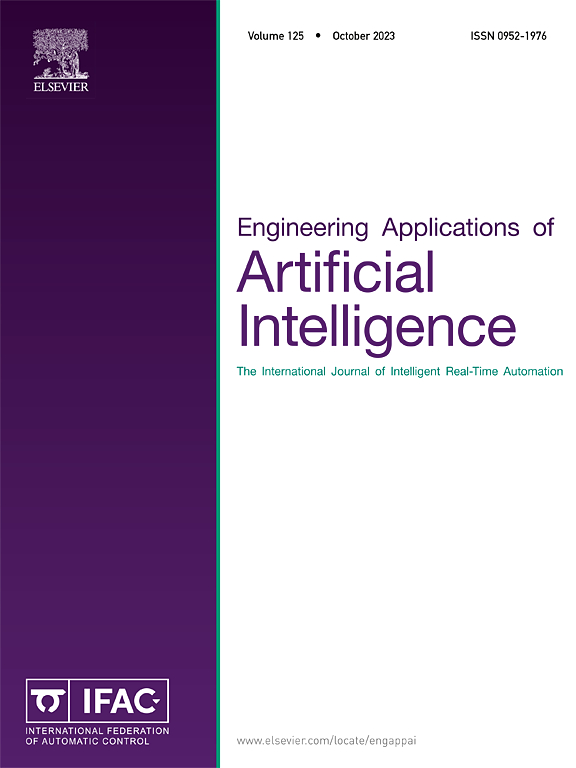基于人工神经网络和地理信息系统的分析预测土耳其中部安纳托利亚地区的沼气潜力
IF 7.5
2区 计算机科学
Q1 AUTOMATION & CONTROL SYSTEMS
Engineering Applications of Artificial Intelligence
Pub Date : 2025-07-26
DOI:10.1016/j.engappai.2025.111843
引用次数: 0
摘要
全球对厌氧消化产生的沼气能源的利用一直在稳步增加,这强调了在实施大规模生产之前评估生物质资源和估计沼气发电潜力的重要性。本研究的重点是土耳其中部安纳托利亚地区(CAR),该地区2021年的牛群为395万,占欧洲牛群的5%以上。这项研究的一个关键新颖之处在于利用2021年的数据估计了该地区的牛粪基沼气潜力(BMBP),该数据显示,与2004年的1370吉瓦时相比,该潜力显着增加到3162吉瓦时(GWh)。这一显著增长不仅凸显了该地区尚未开发的可再生能源潜力,也凸显了先进方法在准确评估和预测能源资源方面的关键作用。为了预测未来潜力,利用人工神经网络(ann)对中国各省至2035年的BMBP进行了估计。其中,科尼亚预计在2035年将拥有最高的BMBP,达到919 GWh,贡献了约50%的居民用电量和4.5倍的照明用电量。此外,利用Arc地理信息系统(ArcGIS)对该地区进行地理和时间分析,提供了一个全面的空间视角。ArcGIS的研究结果和BMBP的研究结果都强调了BMBP对中非共和国可再生能源的重要贡献,为制定区域能源政策提供了重要见解。未来的研究应扩大到包括该地区其他农业废弃物的沼气潜力。本文章由计算机程序翻译,如有差异,请以英文原文为准。
Forecasting biogas potential in Türkiye’s Central Anatolia region with artificial neural networks and geographical information system-based analysis
The global utilization of biogas energy generated via anaerobic digestion has been steadily increasing, emphasizing the importance of assessing biomass resources and estimating biogas generation potential before implementing large-scale production. This study focuses on Türkiye’s Central Anatolia Region (CAR), which had a bovine population of 3.95 million in 2021, accounting for over 5 % of Europe’s bovine population. A key novelty of this research lies in the estimation of the region’s bovine manure-based biogas potential (BMBP) using 2021 data, which revealed a remarkable increase to 3162 GW-hour (GWh) compared to 1370 GWh in 2004. This significant growth not only highlights the region’s untapped renewable energy potential but also underscores the critical role of advanced methodologies in accurately assessing and forecasting energy resources over time. To forecast future potential, artificial neural networks (ANNs) were employed to estimate the BMBP of all provinces in the CAR up to 2035. Among these, Konya is projected to have the highest BMBP in 2035, with 919 GWh, contributing approximately 50 % of the electricity consumed by its habitations and 4.5 times the electricity expended for lighting. Additionally, Arc Geographical Information System (ArcGIS) was utilized to perform geographical and temporal analyses of the region, providing a comprehensive spatial perspective. Both the ArcGIS findings and the BMBP findings highlight the significant contributions of BMBP to renewable energy resources in the CAR, offering critical insights for shaping regional energy policies. Future research should expand to include biogas potential from other agricultural wastes in the region.
求助全文
通过发布文献求助,成功后即可免费获取论文全文。
去求助
来源期刊

Engineering Applications of Artificial Intelligence
工程技术-工程:电子与电气
CiteScore
9.60
自引率
10.00%
发文量
505
审稿时长
68 days
期刊介绍:
Artificial Intelligence (AI) is pivotal in driving the fourth industrial revolution, witnessing remarkable advancements across various machine learning methodologies. AI techniques have become indispensable tools for practicing engineers, enabling them to tackle previously insurmountable challenges. Engineering Applications of Artificial Intelligence serves as a global platform for the swift dissemination of research elucidating the practical application of AI methods across all engineering disciplines. Submitted papers are expected to present novel aspects of AI utilized in real-world engineering applications, validated using publicly available datasets to ensure the replicability of research outcomes. Join us in exploring the transformative potential of AI in engineering.
 求助内容:
求助内容: 应助结果提醒方式:
应助结果提醒方式:


